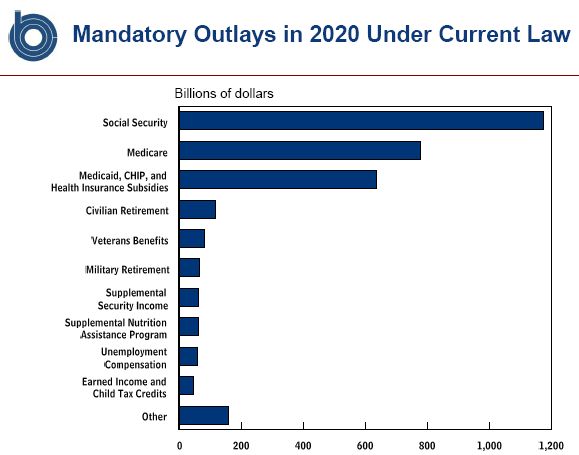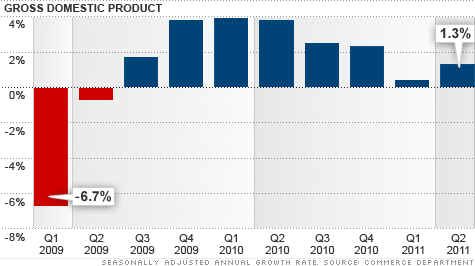07.30.2011 UPDATE IV

Countdown to Deficit Cuts – But Still a Deficit: Update IV
original article written by Net Advisor™
Reader Note: This article is a 5-part series that began HERE. This is Update IV of our Countdown to Deficit Cuts article series.
Moody’s Suddenly Reverses Downgrading U.S. Credit Rating… For Now
On 07-13-2011, Moody’s warned of a downgrade of the U.S. debt rating.
On 07-29-2011 Moody’s came out after the U.S. stock market closed and said they would probably “affirm” (maintain) the U.S.’s AAA credit rating for now with “outlook negative” (Source: Reuters).
This is a dramatic shift from Moody’s view on the U.S. debt from just about two weeks ago. As of 07-29-2011, absolutely nothing has changed in the way of progress or a solution to the U.S. debt ceiling or Washington’s deficit spending problems.
The deficit is not going down and Congress is not coming up with any big plans that will pass both houses to lower the deficit by any material number anytime soon. These were concerns of Moody’s (Source: Fox Business). Another major debt rating agency, Fitch warned about U.S. debt downgrade on June 9, 2011 (Source: Wall Street Journal).
Moody’s warned of a 50% chance of a downgrade even when the deficit cut was a proposed $4 Trillion (Source: Bloomberg). That has since become a mere pipe-dream, and would have not solved the deficit anyway. Now we are looking at cutting less than $1 Trillion over 10 years. And even with this plan of cutting less than $100 Billion a year in government spending, the democrat controlled Senate rejected that idea. So with no plan on the table, the credit rating agency Moody’s suddenly says it will likely keep the AAA debt rating for the U.S. (for now).
This just does not make any financial sense at all. How does a debt rating agency warn one of a big debt problem; the debtor does nothing about it, and then the debt rating agency says it OK to continue and borrow more?
Think of it this way.
- You owe $100,000.
- You can’t pay it back unless you borrow more money from your creditor.
- Your creditor knows this and says it will cut your credit score down to make it more difficult to borrowing more money.
- You tell your creditor you have no sound plan to ever fully repay.
- Your creditor then keeps your credit rating the same, so you can borrow more money?
- This is what happened between the U.S. Government and Moody’s late Friday, 07-29-2011.
Why Did Moody’s Suddenly Reverse Course on U.S. Credit Downgrade?
It is our (conspiracy theory) view that the rating agency may have been subject to a phone call or some back channel dialog with officials tied to the White House and or the Treasury to put persuasive pressure on Moody’s to reverse their more immediate U.S. credit downgrade just three days before the August 2nd deadline when the U.S. government runs out of money.
I’ll Scratch Your Back if You Scratch My Back (Later)
In April 2011, the White House encouraged Standard & Poor’s (S&P) to not lower their debt rating on the United States government (Source: Washington Post).
“The Obama administration privately urged Standard & Poor’s in recent weeks not to lower its outlook on the United States…(and)…Treasury officials told S&P analysts that they were underestimating the ability of politicians in Washington to fashion a compromise to curb deficits, a Treasury official said.”
— Source: Washington Post, 04-19-2011
S&P lowered its outlook on the United States from “stable” to “negative” if the federal government fails to bring spending on par with revenue. As for why Moody’s change their mind at the last minute to keep U.S. debt “stable” is in serious question.
The U.S. government has done little to investigate the known problems (more) by the rating agencies who contributed a part (not the whole, but contributed a part) of the so called mortgage and housing crisis of 2008. The SEC could file civil charges, but to date, has not (Source: Reuters). The agencies rated debt AAA that turned out to be near worthless and got paid to rate bad debt.
The Obama Administration pushed some 132 new “economically significant” rules on business, yet really has not gone after an obvious and publicly and politically supported attack on the corporate rating agencies, like it did say Goldman Sachs.
For the last three years the Obama Administration has done little here in terms of reform, or penalizing any alleged ratings fraud or misrepresentation. To be fair, a 2010 hearing was held in a class-room-type setting with Warren Buffett and Moody’s Chairman/ CEO Raymond McDaniel (Source: C-Span, Video, 06-02-2010).
Our conspiracy theory is that the Administration largely left the agencies alone for a reason. That if the rating agencies were subpoenaed to testify and slapped around before large Congressional hearings, subject to big fines and new regulation in their industry, that might not bode well for the U.S. government when it was their turn to have their credit reviewed.
Regardless of conspiracy theory or not, the move by Moody’s to suddenly reverse their near-term warning on U.S. debt rating when nothing has changed by Congress is strange and highly uncharacteristic of the agencies job function.
Count Down to Any Deficit Cuts?
On July 18, 2011 there was a proposed 614-page $9 Trillion 10-year deficit reduction plan by medial doctor and Senator Tom Coburn, M.D. (R-OK). The ambitious plan is clearly a step at least thinking in the right direction as opposed to creating more deficits. Unfortunately, the plan had no chance to pass the House or Senate because no one, or rather most of government just couldn’t handle losing their unlimited spending check-book. [Dr. Coburn’s Plan can be found here: original link backup link.] A side note, Dr. Coburn also found 42 pages worth of wasteful federal government spending in his own state of Oklahoma (Full 42p Report PDF – share link).
Senate Playing an Active Role Holding on to “Their” Government Check-book
As we stated above, Dr. Coburn’s $9 Trillion deficit cut had no chance of passing even though the plan suggests to solve the U.S.’s long-term debt problems.
The democratic controlled Senate also rejected a subsequent bipartisan $3.7 Trillion bill passed by the House called, “Cut, Cap and Balance.” This plan included a balanced budget amendment. Harry Reid (D-NV), the Senate Majority Leader called the House plan “radical” and “one of the worst pieces of legislation to ever be placed on the floor of the United States Senate” (Source: Politico).
Earlier in the year the Senate also rejected a budget to overall Medicare (Source: CNN).
The Senate also rejected efforts to break a $6 Billion corporate farm subsidy for ethanol in June of 2011. Separately, oil companies received some $21 Billion in tax breaks over the last 10 years. These and other corporate welfare projects also need to go (Source: Wall Street Journal).
Last Ditch Effort
Senator Reid proposes a last ditch effort to increase the U.S. debt ceiling by $2.7 Trillion. What this means is that if passed by the House and Senate and signed by President Obama, then the government could run $2.7 Trillion worth of new deficits until AFTER the 2012 election was over (Source: Reuters).
At that time, the U.S. would be right back to where we are now, and we would have to raise the debt ceiling again… then again… then again… and until people stop buying U.S. Treasuries or until government got their act together and reform itself and take away their unlimited check writing ability. Net Advisor™ has offered to help Congress with their financial issues; so far no takers.
Scenarios We Predict
I. Outcome: Government passes what will probably be a trivial band-aid deficit cut, but will still mean higher deficits this year, next year and beyond until it is properly addressed by real government reformers if ever.
Reaction: Stock market relief rally = market goes up temporarily, but later falls again.
II. Outcome: Government fails any debt ceiling solution on or before Aug 2nd or whatever new date gets assigned.
Reaction: Stock markets sell off hard. Interest rates go bit higher.
III. Outcome: Credit rating agencies downgrade U.S. debt from AAA to one notch lower.
Reaction: Interest rates go bit higher. Stock markets temporarily tank (sell off). A steep drop, then a bounce, then a fall again, then eventually rationalizing the new mantra of, “Hey were the USA,” instead of the reality, “hey, we’re broke.”

True Lies?
The admitted U.S. debt is currently around $14.3 Trillion, however the actual liabilities of the U.S. government are somewhere around… are you sitting down for this: $75 Trillion to $100 Trillion. There are a couple recent articles in Forbes and MSN Money that address the real deficit risk.
- $14.3 trillion: “official” national debt.
- $5 trillion: Amount Uncle Sam is on the hook for Fannie Mae and Freddie Mac.
- $62 trillion: Total liabilities and unfunded obligations for Social Security and Medicare.
- $16.1 trillion Federal Reserve emergency loans between Dec. 1, 2007, and July 21, 2010.
— Source: Forbes, 7-23-2011
Solving for the Deficit: Reality Check
We found this especially disturbing:
“To get our overall fiscal gap under control…the U.S. must cut spending or raise tax revenue by $20 trillion over the next decade, far more than either the president wants or the House Republicans (or Democrats) seek.”
— Professor Laurence Kotlikoff at Boston University, reported by Forbes
Why The Stock Market May Sell-off Anyway
As if the growing deficit news was not the only problem for Washington, another economic report pointed another sign of a slowing economy. The U.S. economy really has been slowing its growth-rate since the first quarter 2010 (CNN Chart above). Regardless of the deficit issues, and credit downgrades or not, the stock market is likely to begin focusing on what the economy is doing, or not doing.
The stock market could just ignore all this bad news called, “climbing a wall of worry” and restart a rally so long as future corporate earnings are stronger than expected. But at some point the U.S. debt risk just keeps going and going and going, until…
UPDATE V (final report in this series): Continues HERE
Credits:
Chart (page top) “Mandatory Spending” from Congressional Budget Office. Full Report (11 ppps PDF)
Chart (page bottom) “U.S. GDP” courtesy: CNN
Original content copyright © 2011 Net Advisor™
Financial Disclosures: Net Advisor™ and or private clients are currently effectively short the S&P 500 Index (NYSE: SPY), the NASDAQ 100 Index (NASDAQ: QQQ), short a major U.S. financial bank not named in this report, long gold via GLD LEAPs, and have other positions not named in this report all via stock and options. These disclosures are not intended to be buy or sell recommendations. Investing contains risk. Market opinions and positions can change as new data and market conditions change at any time without notice. Follow us on Twitter for more regular disclosures and other updates. Please see our Legal Disclaimer.
Revised copyright © 2015 NetAdvisor.org® All Rights Reserved.
NetAdvisor.org® is a non-profit organization providing public education and analysis primarily on the U.S. financial markets, personal finance and analysis with a transparent look into U.S. public policy. We also perform and report on financial investigations to help protect the public interest. Read More.

